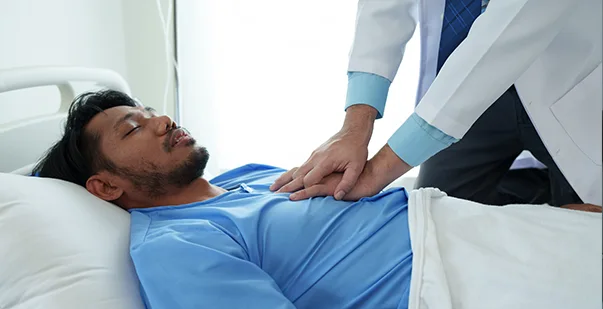
Last Updated on: October 16, 2024
Table of Contents:
In the United States, nearly 702,880 people died due to heart issues. When such incidents occur, there is often little time to react. In these critical moments, every second is of extreme importance. Waiting for medical help to arrive can lead to fatal outcomes. In such emergencies, CPR is one of the best methods to stabilize the condition.
For this purpose, hands-only CPR has been found to be a proven way to save more lives compared to other methods. While other techniques can also be effective, Hands-Only CPR is the most recommended.
In this blog, we are going to discuss what is hands-only CPR and how practicing it effectively can benefit you in several ways.
Hands-only CPR is the most simplified method of performing CPR. It focuses on providing chest compressions without rescue breaths. This method was devised for bystanders, who are often the first witnesses to cardiac arrest. CPR without breaths is essential for untrained individuals to know because it is easy to learn and requires minimal effort to apply.
With just a few minutes of instruction, anyone can effectively perform hands-Only CPR, increasing the victim’s chances of survival. By empowering more people with this knowledge, communities can become better equipped to respond to emergencies and save lives.
Read More: What does CPR stand for?
The steps of how to do CPR are straightforward but can be physically demanding. Thus, responders should keep a few important points in mind before performing CPR, which are discussed as follows:
The first step when encountering an emergency is to inform the professionals. Calling 911 is the best option, but contacting the local emergency number is also important. Until help arrives, BLS procedures such as CPR should be performed. This can help prevent the situation from worsening and assist the body in transferring oxygenated blood to vital organs.
When a person becomes unconscious and is likely facing heart issues, checking for responsiveness is crucial. Tapping the person and shouting can help assess their condition. If they respond, it indicates the situation may be under control.
If they don’t respond, check for a pulse. If the person is not breathing or is just gasping, it is advised to begin CPR immediately. CPR can help restore the heartbeat to normal and revive vital organs like the brain and lungs.
This is the most critical part of CPR. Correct placement of hands for CPR is also crucial. Continue compressions until professional help arrives. If the patient starts to regain consciousness, CPR should be stopped. Additionally, when normal breathing and heart rate return, it is advised to cease CPR. Below is a quick guide to learn about the best CPR position of hands.
Read More: How To Position Your Hands For CPR: Adult, Child & Infant?
Hands-Only CPR is a simple yet effective way to help someone in cardiac arrest. It involves chest compressions without mouth-to-mouth breathing. This method is easy to learn and can save lives when performed quickly and correctly. Following are hands-only CPR steps:
Hands-only CPR equips a person with a life-saving skill. It can make a huge difference in cases of emergencies. Some of the reasons that make it better are:
Hands-Only CPR has proven to save more lives and is an essential skill for everyone to learn. While CPR with rescue breaths is more effective for infants, hands-only CPR is highly effective for adults in emergencies. The awareness and importance of knowing CPR are growing worldwide, with 54% of Americans now familiar with how to perform it.
To be prepared to help in a critical moment, consider taking an online course on hands-only CPR. Equip yourself with the knowledge, and be ready to make a difference when it is most needed.